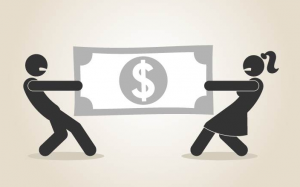That Darling Newborn Will Cost You $233K
Ah! Isn’t he/she cute? But take a closer look at what that darling little one is going to cost you over the next 17 years.
According to the United States Department of Agriculture, the estimated costs of rearing a child today is $233,610. That’s about $14,000 annually. The figure is based on a middle-income family with two children. Kids cost more in the city, also, than they do in rural areas.
The estimates, released recently by the department, are based on 2015 data, so the cost probably increased while you weren’t looking last year. The bottom line is about 3 percent higher than for the previous year, an increase that outstrips overall inflation.
It’s enough to give new parents the heebie-jeebies. The figures calculated by the USDA are used by state governments and courts to prepare child support and foster care guidelines.
The bulk of the costs fall right where you’d imagine: housing, food, transportation, health care, education, clothing and miscellaneous expenses.
Housing Costs
In case you had’n’t noticed, housing is expensive, accounting for 26 to 30 percent of a family’s expenditures. The USDA figures the cost for another child by calculating the cost of an added room to a home. The department admits that it doesn’t calculate into the figure such items as a family’s desire to live in more expensive neighborhood that offer better schools and other amenities attractive to those rearing children.
Middle income married-couple families living in the urban Northeast reported the highest costs – about $253,770 for the 17-year total, ocmpared with the urban West at $235,140; the urban South at $221,730 and the urban Midwest at $217,020. The average rural amount was $193,020. Lower-income families averaged $174,690 per child through age 17. At the other extreme, higher-income families will spend, on average, $372,210.
Food Costs
Following housing on the expense list are health care and food. For the middle-income family, food takes up about 18 percent of the child-rearing budget. Child care and education eat up another 16 percent. Education costs have consistently increased each year since 1960, when the USDA started calculating the costs. At that time, education only devoured 2 percent of the child-rearing costs. Child care also has become an increasingly expensive item with more women entering the labor force.
Education Costs
The report doesn’t even consider the costs of higher education, which usually don’t kick in until after the child is 17. The average annual cost of college now is $47,370 for a private institution, $20,090 for a public college.
New parents who groan at the costs of diapers and formula have even bigger surprises ahead. Between the ages from birth to 2, the little cherub costs only around $12,680 while a teenager 15 to 17 will dip into the family’s finances to the tune of about $13,900 each year. The costs of food, transportation, clothing and health care all escalate for the teens.
Good news for larger families! Those with three or more children spend an average of 24 percent less per child. That’s because kids in large families share rooms, wear hand-me-downs, and inherit older siblings’ toys. Child care facilities often offer sibling discounts.
On the flip side, a single child costs an average 27 percent more.



